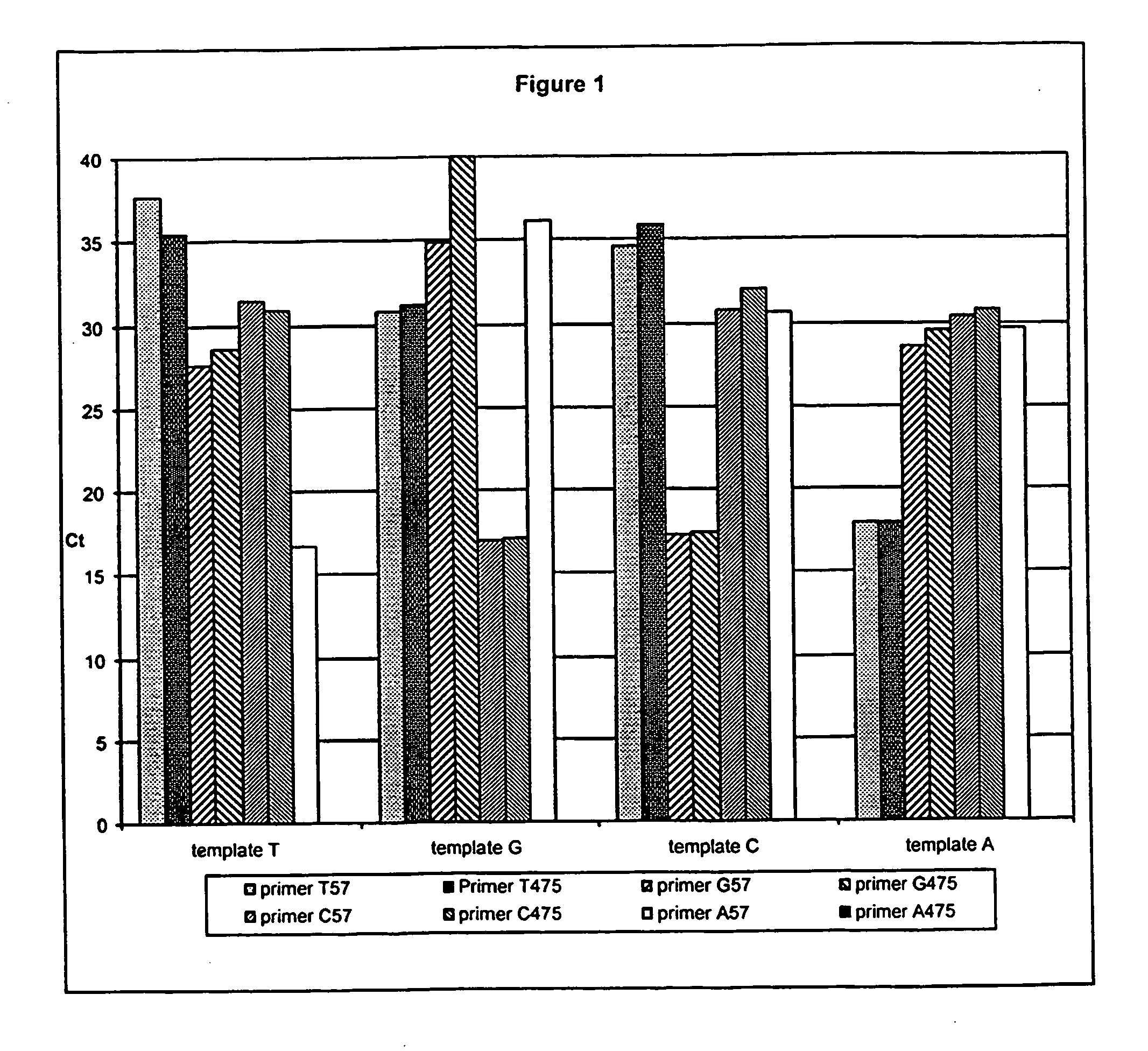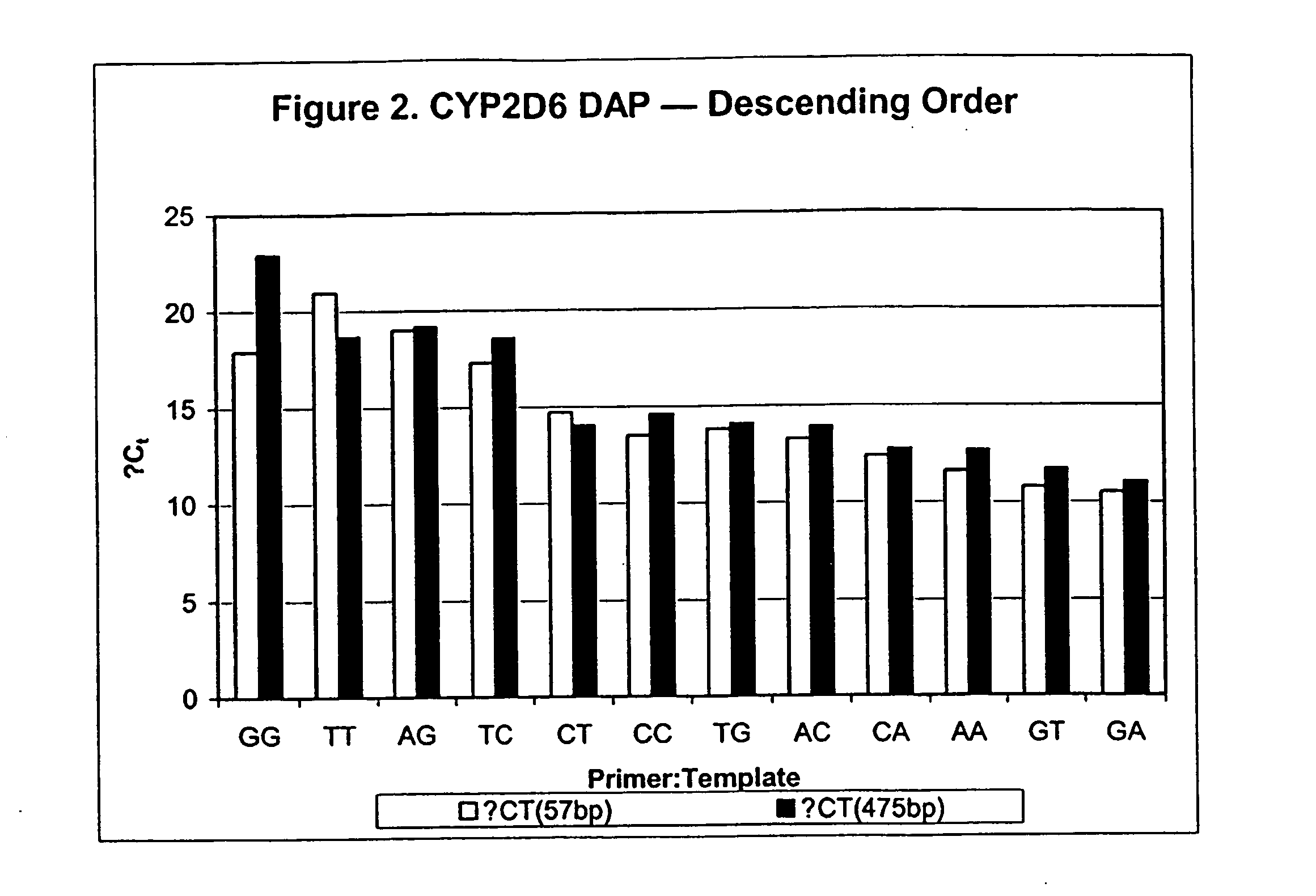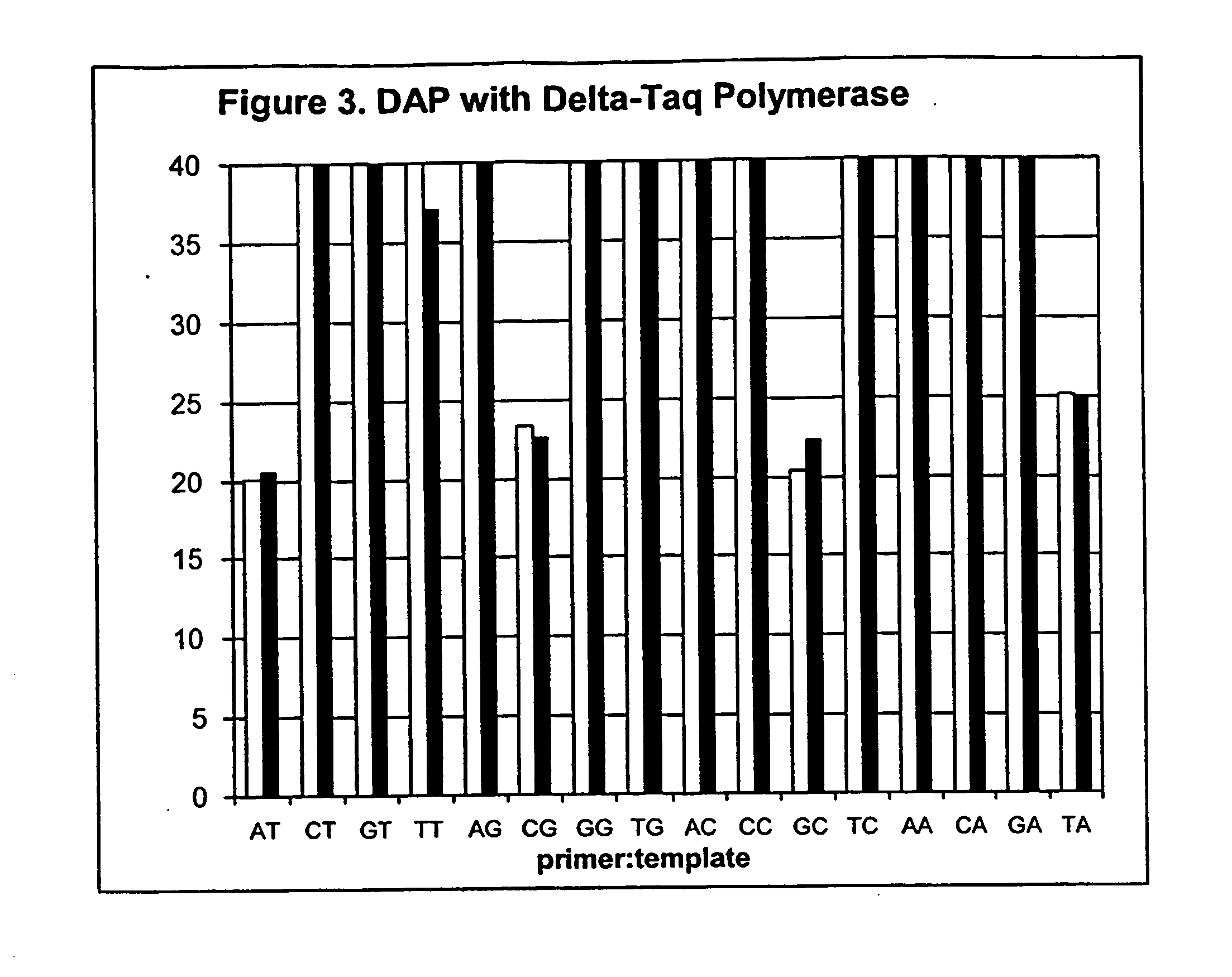Polymorphism and haplotype scoring by differential amplification of polymorphisms
a technology applied in the field of polymorphism and haplotype scoring by differential amplification of polymorphism, can solve the problems of insufficient information to determine whether the individual has a functional copy of this gene, insufficient scoring of individual polymorphisms that make up the haplotype,
- Summary
- Abstract
- Description
- Claims
- Application Information
AI Technical Summary
Benefits of technology
Problems solved by technology
Method used
Image
Examples
example 1
[0098] In this example it is demonstrated that the method of the invention is capable of distinguishing all four nucleotides at a single position.
[0099] In a typical SNP assay, there are only two known possible bases at the SNP site, and therefore only two allele-specific primers would be used, corresponding to those two bases.
[0100] However, to demonstrate the generality of the method, four templates were generated that were identical except for a single position, where each of the templates had a different base. Sixteen polymerase chain reactions were then performed, using all combinations of the four templates and four allele-specific primers, each complementary to a different version of the sequence.
[0101] A 475 bp portion of the human cytochrome P450 gene CYP2D6 (GenBank Accession # M33388, nucleotides 3265-3729) was amplified using primers A1 (forward) and A5 (reverse), and cloned into a TA cloning vector (Invitrogen Corp., Carlsbad Calif.). Three PCR primers identical in s...
example 2
[0130] This example illustrates the use of DAP to distinguish haplotypes. The haplotypes distinguished are three alleles of human Apolipotein E (ApoE) which have been shown to affect risk for atherosclerosis and Alzheimer's disease.
[0131] The ApoE gene (GenBank Acc# XM—044325) has been functionally characterized into three alleles; however, each allele is defined by the bases present at two separate positions, and as such the alleles are actually haplotypes. The SNPs making up the haplotypes are present at two sites within the ApoE gene: T / C at base 446 and C / T at base 584, corresponding to the protein sequence changes of Cys / Arg at amino acid 112 and Arg / Cys at amino acid 158. T446 with C584 is the E3 allele, T466 with T584 is the E2 allele, and C466 with C584 is the E4 allele. No instances of C466 with T584 have been reported (reviewed by de Knijff et al., Human Mutation 4: 178-194, 1994). The combinations of these haplotypes yield six different genotypes: E2 / E2, E3 / E3. E4 / E4, E2...
example 3
[0151] In this example, a single-tube assay for a SNP or a polymorphism is provided, using two differently-colored fluorophores and self-quenching primers.
[0152] The SNP scored was in the gene ApoE (see Example 2). Primer sequences were:
C15′-(BHQ-1)-GGACATGGAGGACGTG(FAM-dT)-3′C25′-(BHQ-1)-GGACATGGAGGACGTG(HEX-dC)-3′C35′-GGACATGGAGGACGTG-3′
BHQ-1 is a commercially-available FRET quencher, Black Hole Quencher, FAM is Fluorescein, and HEX is hexachlorofluorescein. FAM and HEX are covalently attached directly to the bases, as is well known in the art. All modified oligonucleotides were purchased from Trilink Biotechnologies, Inc., San Diego Calif. C1 and C2 are self-quenched primers in the forward direction with a quencher on the 5′ end and a fluor on the 3′ base. When these are extended and incorporated into double-stranded DNA, quenching decreases. The 3′ nucleotides of C1 and C2 are query positions, and are complementary to common alleles of a SNP in ApoE. C3 is an unmodified prim...
PUM
| Property | Measurement | Unit |
|---|---|---|
| temperature | aaaaa | aaaaa |
| melting temperatures | aaaaa | aaaaa |
| melting temperatures | aaaaa | aaaaa |
Abstract
Description
Claims
Application Information
 Login to View More
Login to View More - R&D
- Intellectual Property
- Life Sciences
- Materials
- Tech Scout
- Unparalleled Data Quality
- Higher Quality Content
- 60% Fewer Hallucinations
Browse by: Latest US Patents, China's latest patents, Technical Efficacy Thesaurus, Application Domain, Technology Topic, Popular Technical Reports.
© 2025 PatSnap. All rights reserved.Legal|Privacy policy|Modern Slavery Act Transparency Statement|Sitemap|About US| Contact US: help@patsnap.com



